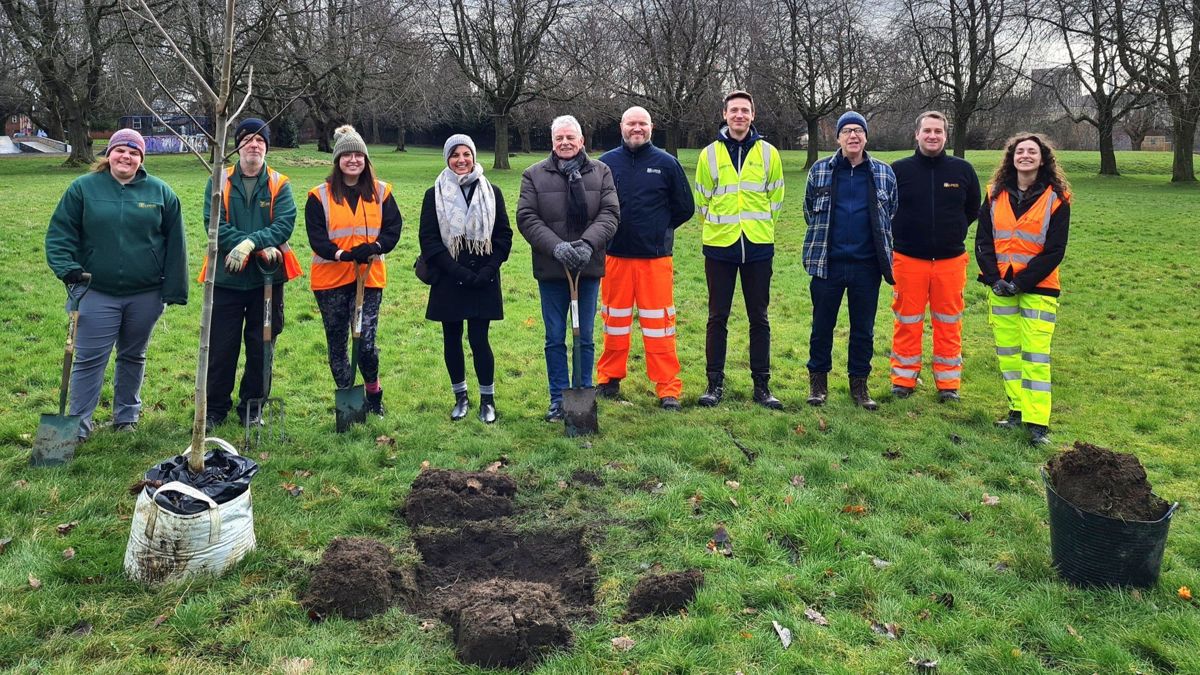Leeds City Council has planted over 550 trees as part of the Armley Gyratory improvement scheme, aiming to reach a total of 660 trees. This initiative not only enhances the local greenery but also supports urban wildlife, improves air quality, and addresses climate change, reflecting the city’s commitment to environmental sustainability and community involvement.
What environmental efforts have been made in the Armley Gyratory improvement scheme in Leeds?
Leeds City Council has planted 556 trees as part of the Armley Gyratory improvement scheme, moving towards the goal of 660 trees. This initiative enhances local greenery, supports urban wildlife, improves air quality, and combats climate change. The diverse tree species include Maples and Walnuts, reflecting the city’s commitment to environmental sustainability and community involvement.
Environmental Enhancement through Community Effort
The city of Leeds has taken a significant leap forward in its commitment to environmental sustainability and community involvement with the Armley Gyratory improvement scheme. A commendable total of 556 trees have now been planted, in a bid to surpass the ambitious target of 660 new trees set for this project. These efforts not only enrich the local greenery but also play a vital role in combating climate change, a priority echoed by community groups and Leeds City Council alike.
The planting initiative, strategically scheduled for this winter’s planting season, has seen a diverse range of tree species being introduced. Among the 350 trees planted recently, 10 Walnut trees were chosen to grace Armley Park, a decision made with the input of local volunteers, councillors, and the Leeds City Council’s parks and countryside rangers. The project has been enthusiastically received, with 139 trees placed around the Armley Gyratory and 18 more across the Clyde Estate, contributing to the scheme’s ecological footprint.
In the spirit of transparency and inclusivity, the council has actively engaged with residents and local community groups. This collaboration has been instrumental in determining the planting sites and design choices, with a focus on native broadleaf species such as Maple, Lime, Hornbeam, and Oaks, alongside the more specialized Walnut, fruit, and Cherry trees. This biodiversity is not only aesthetically pleasing but is crucial for fostering urban wildlife habitats.
Impact on Urban Infrastructure and Air Quality
The Armley Gyratory stands as a pivotal point of transportation within Leeds, with its significance being further amplified by the recent completion of highways construction work. The remodeled gyratory has markedly improved vehicle flow, a component of the city’s broader strategy to alleviate traffic within the city center. This strategy, aimed at mitigating environmental impacts, also seeks to encourage pedestrian and bicycle traffic by enhancing safety and connectivity between neighborhoods.
Prior to these improvements, approximately 220 trees were removed to accommodate the new gyratory alignment and the necessary widening of roads and footpaths. This removal, while necessary for safety and visibility, underscored the need to compensate for the loss of greenery. To this end, the council’s commitment to replant trees at a three-to-one ratio reflects a strong environmental ethos. The newly planted trees are expected to yield substantial benefits, including improved air quality and a reduction in carbon emissions, aligning with Leeds’ goal of fostering clean air and addressing climate change.
The construction of phase two structures, including updates to three Armley Gyratory footbridges, is currently progressing well. The Gelderd Road footbridge, for example, was efficiently replaced over a single weekend, completed ahead of schedule. This demonstrates Leeds City Council’s dedication to swift and effective infrastructure development, ensuring that the community experiences minimal disruption while reaping the long-term benefits of these enhancements.
Leadership and Community Acknowledgment
This ambitious tree planting endeavor has not gone unnoticed, with key council figures stepping forward to acknowledge the efforts and milestones reached. Councillor Helen Hayden, executive member for sustainable development and infrastructure, expressed her delight at the season’s progress, saying, “The 556 trees in total mark a major milestone contributing to the number of trees we need to plant.” She praised the diverse locations of the planting efforts, such as Beggars Hill and Armley Park, and recognized the constraints that the gyratory’s location places on further planting.
The collaborative spirit that drove this initiative was also emphasized by Councillor Mohammed Rafique, executive member for climate, energy, environment, and green space. He reflected on the extensive benefits of strategic tree planting, stating, “That’s why I am delighted to see hundreds more trees from so many different species go into the ground, in places that have been chosen by members of the local community.” He thanked volunteers for their dedication, highlighting trees’ role in cooling the city, flood prevention, enhancing well-being, and creating natural spaces.
Through these projects and the actions of Leeds City Council, the city leans into a future where urban development and environmental stewardship go hand in hand. The tangible results of these tree planting activities serve as a testament to what can be achieved through the collective effort of local authorities, community groups, and residents, all united by the goal of nurturing a greener, healthier, and more connected Leeds.
- Leeds City Council has planted 556 trees as part of the Armley Gyratory improvement scheme, with a goal of reaching 660 trees.
- The initiative enhances local greenery, supports urban wildlife, improves air quality, and addresses climate change.
- The diverse tree species include Maples and Walnuts, reflecting the city’s commitment to environmental sustainability.
- The council actively engaged with residents and local community groups to determine planting sites and design choices.
- The tree planting initiative is part of Leeds’ broader strategy to alleviate traffic, encourage pedestrian and bicycle traffic, and improve urban infrastructure.
